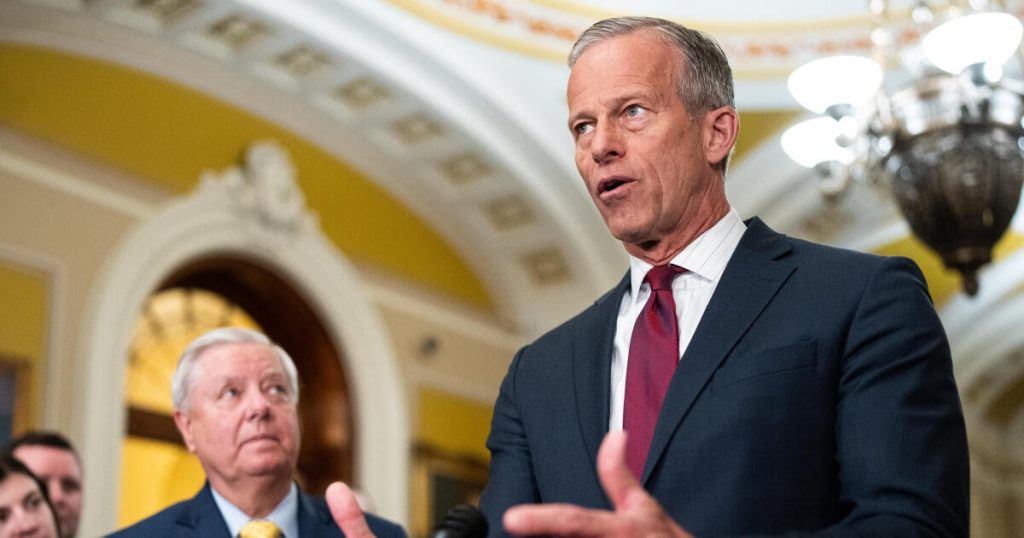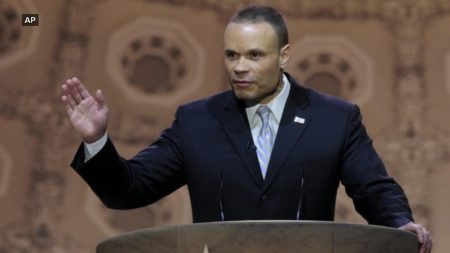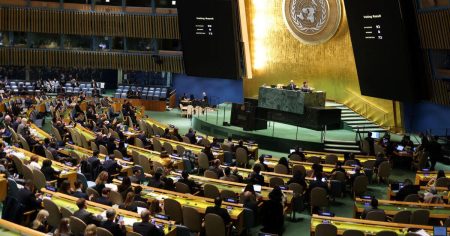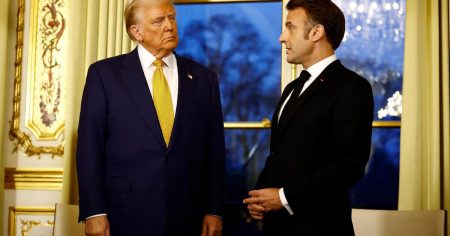The Senate’s Budget Plan: Priorities and Process
The U.S. Senate, under the leadership of Majority Leader John Thune, has announced its intention to move forward with a budget proposal that aligns with President Trump’s agenda. The proposal, set for a vote this week, focuses on three key areas: enhancing border security, bolstering defense capabilities, and expanding American energy production. This budget is the first of two resolutions planned by the Senate, with the second aiming to extend the 2017 tax cuts. Senator Lindsey Graham, chair of the Budget Committee, emphasized the urgency, particularly noting that ICE is running out of funds, and highlighted the allocation of $175 billion for border security and $150 billion for military capabilities.
The Reconciliation Process: Mechanism and Implications
The Senate is utilizing the reconciliation process to pass this budget, allowing them to bypass the 60-vote threshold typically required in the Senate. This process requires both chambers to approve identical budget resolutions, directing committees to align spending with new goals. The legislation must focus on taxes, spending, or the debt limit, with new spending requiring offsets. The Senate Parliamentarian will oversee the process, ensuring all provisions have direct budgetary impacts. This approach streamlines passage but necessitates careful crafting to meet specific criteria.
The House’s Competing Plan: A Unified Approach
In contrast, the House of Representatives is advancing a single, comprehensive bill that combines border security, defense, energy, and tax priorities. This approach, advocated by House Majority Leader Steve Scalise, aims to address multiple agendas in one legislation. The House proposal includes up to $4.5 trillion in tax cuts, $1.5 trillion in spending cuts, and a $4 trillion increase in the debt ceiling. Despite the Senate’s two-part strategy, the House plans to present its bill upon return from recess, reflecting a preference for a broader, unified approach.
Democratic Opposition: Concerns and Criticisms
Senate Democrats have voiced strong opposition to the budget resolution, with Senator Patty Murray criticizing it as favoring the wealthy at the expense of the middle class. Senator Ron Wyden expressed concerns about potential Medicaid cuts, suggesting these might be obscured but inevitable. These critics argue that the budget prioritizes partisan goals over broader societal benefits, highlighting the contentious nature of the proposal.
Public Reaction and Administrative Perspective
Public response to the budget has been mixed, with supporters applauding the focus on security and economic growth, while critics worry about the impact on social programs. The Trump administration backs the Senate’s approach, emphasizing the mandate from the November election. This budget is seen as a significant step in advancing the administration’s policies, though its impact remains uncertain.
Conclusion: Challenges and Future Prospects
The budget proposals from both chambers reflect differing strategies within the Republican party. The Senate’s phased approach aims to expedite key priorities, while the House seeks a comprehensive solution. Democratic opposition and the complexities of reconciliation pose significant hurdles. As the legislative process unfolds, the success of these budgets will depend on bipartisan cooperation and the ability to address diverse concerns. The outcome will shape the nation’s policy landscape, underscoring the challenges of governance in a divided political environment.















